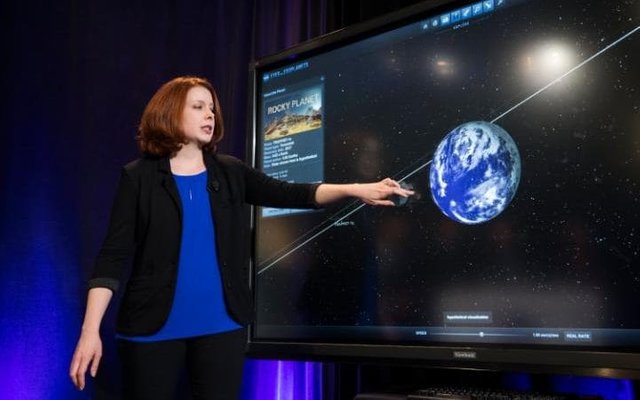NASA has discovered seven new Earth-like planets

The collaboration among the Southern European Observatory and NASA was announced yesterday 22 February 2017 on the discovery that may alter many of our scientific, human and philosophical concepts on Earth. Where the discovery of a new solar system contains seven planets, similar to the conditions that have many conditions of life on earth.
Since ancient times, NASA has been providing other space solutions for the Earth and searching for all the ways of life in the universe beside those on earth using telescopes, calculations, and many theories and studies. It has already been able to but to discover 7 planets at once in one solar system this is a different discovery.
The planets were discovered using NASA's Spitzer Space Telescope, where the planets appeared very close together and circled the star in a Jupiter-like motion. Although some of the planets near their star, the possibility of the existence of water is large because it differs with the old is much smaller and cooler, making the atmosphere on nearby planets suitable for life and the stability of water appropriately.
Three planets of the seven is located in the habitable zone of the star, or habitable zone, the region where the orb is away from the star properly to be water on it, which means that three planets have been discovered there is a great potential to contain oceans of liquid water, Life on it. The other four is less likely to have watered, but scientists do not deny it.
Density tests tell us that six planets are rocky planets, which means they are stable and stable to live on.
The new group was named Trappist one relative to the Trappist telescope which made many observations and measurements to track the group before it was detected.
Michelle Gillon says that this group is the largest discovered so far and surprisingly and equally impressive that their size is very similar to the size of the earth, which means an attractive gravity approach to Earth.
For their star, the surface temperature of 2550 Kelvin, which means that his age may exceed 500 million years and is a young star compared to the sun, which is 4.6 billion years and the temperature is 5778 Kelvin
We are now coming to the hard part where this system is at least 40 light years away, because if we want to go there, it will take us hundreds of thousands of years to use the technology we currently have. The Hubble telescope has been used to study their airspace and try to capture some good images. NASA expects more powerful telescopes to be able to help us more in the future to study the planets more clearly.
Congratulations @elmabrouki! You have completed some achievement on Steemit and have been rewarded with new badge(s) :
Click on any badge to view your own Board of Honor on SteemitBoard.
For more information about SteemitBoard, click here
If you no longer want to receive notifications, reply to this comment with the word
STOP